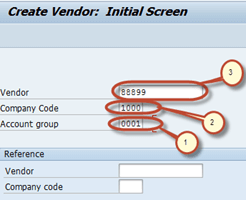
Gestión de inventario y tipos de movimiento en SAP: Guía completa
Inventory Management in SAP MM
Inventory Management is used to manage the inventory for the goods. It is based on several key processes. Definition of movement types, reservations, goods issue and goods receipt.
We have already done basic goods receipt process in the purchase order topic, referencing it to a PO.
There are a number of functions and transactions used in the Inventory management processes, and we will cover the most important in this tutorial.
What is Movement Type in SAP?
Movement Types are used as indicators of what is the purpose of the goods movement (e.g. from storage location to a storage location, receipt from purchase order, issue for the delivery, receipt from production).
Examples of Movement Types in SAP
Movement types have its predefined settings in standard SAP system, and they can be customized according to your needs.A movement type is a three-digit identification key for a goods movement such as 101, 201,311,321.
Also, you could use the same movement type for different processes if you use movement indicators properly. For example, movement type 101 with movement indicator B is used for goods receipt from purchase order. The same movement type 101 with movement indicator F is used for production order goods receipt.
You can see on the next screen how the movement type maintenance screen looks.
Huge number of options are available to set up the movement type properly, and it’s access by the OMJJ transaction code.
Execute OMJJ transaction, and on the initial screen choose Movement type, on the next screen enter the movement type range you wish to edit. You will be presented a screen that looks like the next screen.
You can see a dialog structure on the left. These options are used for setting up our movement types according to our needs. When you select any of the options the details screen on the right is updated with settings for that node.
This is not in a scope of this tutorial, as configuring the movement type requires extremely deep knowledge of the processes in MM module (inventory management component). You just need to understand for now what does the movement type, and movement indicator represent.
Feel free to take a tour around the OMJJ transaction to get a bit more insight on the actual setting that can be made on movement type, and movement type/movement indicator level.
To summarize the lesson, movement types are used for distinction how the goods will be moved in our inventory. For example,
- We will set up our movement type 101 to be used for goods receipt.
- Movement type 311 to be used for stock transfer from one storage location to another in one step.
- Movement type 601 for goods issue for outbound delivery.
Another thing to know is that every movement type needs to have a reversal movement type defined (if we need to cancel 311 we have to define 312 as a reversal movement type, 101 => 102, 601 => 602).
Material document Material document is a document in SAP that contains information on processing of goods movements (receipt, issue, transfer). When you create a material document you are actually moving stock quantity in a certain way as defined by movement type. If movement type 311 is stated in the material document, material will be transferred from one location to another (transfer process). If it’s 101, material document will not have a source storage location but will have a destination (receipt process). If it’s movement type 601, material document will only have source storage location but will not have a destination (issue process).
Goods Receipt Scenarios
As I said in the previous topic, goods receipt can be done referencing a purchase order, production order, inbound delivery or without reference for other kinds of receipt processes. We can set up our movement types behavior according to a movement indicator. I mentioned in the previous topic that there are several indicators that can be used to specify the referencing document type, and create settings for every one of them in combination with movement type.
B – purchase order
F – production order
L – inbound delivery
Blank – no reference
Other – not that significant for now
Madrid
Calle Eloy Gonzalo, 27
Madrid, Madrid.
Código Postal 28010
México
Paseo de la Reforma 26
Colonia Juárez, Cuauhtémoc
Ciudad de México 06600
Costa Rica
Real Cariari
Autopista General Cañas,
San José, SJ 40104
Perú
Av. Jorge Basadre 349
San Isidro
Lima, LIM 15073


